Tag: Workouts
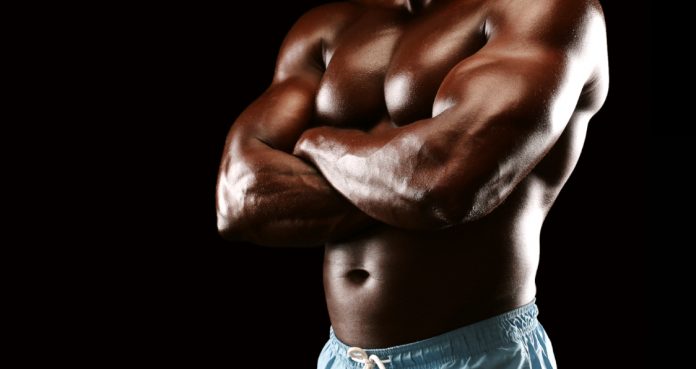
Zottman Curls For Building Massive Arms
Forearm Strength Training
Building strength in the forearms is important and often grip strength is used as a measure and indicator of health and fitness (1). However, for many, developing the muscles of the upper arms is a priority while the forearms often get neglected. As a result, the upper arms develop well yet the forearms fail to adapt at similar rate which leads to imbalances in strength and size.
While forearm training will bring about increases in size, strength and definition there are a number of other, less obvious, benefits associated with forearm training.
Regular forearm training can have a positive impact on gym performance and daily function. Strong forearms can facilitate a greater performance for many compound exercises, such as the deadlift and bench press where having a strong grip is essential. Improving grip strength generally can have a positive impact on simple day to day activities – for example, carrying heavy grocery bags or opening stiff jars.
Regularly performing forearm based exercises can also help to reduce the risk of experiencing injury – specifically around the elbow and wrist joints. Sprains or strains are fairly common injuries that can occur instantly or develop over time (2) and often result from weaknesses around a specific joint. Therefore, strengthening the forearm will have a consequent positive impact on both the elbow and wrist joint.
How To Perform A Zottman Curl
The following 4 coaching points will demonstrate how to effectively perform the Zottman curl. Be aware that this exercise can be performed unilaterally (one arm at a time) or bilaterally (both arms simultaneously).
1) Selecting an appropriate weight and grab the dumbbells using a thumbless, supine (palms up) grip – this will immediately make gripping the dumbbell harder and force the forearm muscles to contract.
2) Before starting the movement, ensure that the elbows are tucked in tightly to the ribcage. From that position, focus on contracting the biceps and hinging at the elbows until the dumbbells rise up to roughly shoulder height.
3) At this point, focus on squeezing the biceps for 1-2 seconds. Before beginning the lowering phase, rotate the entire arm so that the dumbbells are now being held in a prone (palms down) position.
4) In a controlled fashion, begin to lower the dumbbells back down to the hips. Once the dumbbells have returned to the starting position, rotate the arms again and return to a supine grip.
Zottman Curl Benefits
A commonly used forearm resistance exercise is the reverse bicep curl which involves a pronated grip throughout. The benefits of the Zottman curl over the reverse curl is that by using a supinated grip in the first phase it is possible to lift a heavier weight and therefore put more stress through the arms.
The eccentric contraction (lowering phase) produces more force than a concentric contraction (drive phase) and therefore, look to lower the weight slowly and maintain control throughout in order to maximize forearm activation. This technique is known as eccentric or negative training and has been found to be effective for building strength (3).
As briefly mentioned in the coaching points, a thumbless grip places a greater demand on the muscles of the forearm. Removing the thumb from the equation makes gripping the weight highly challenging and, as a result, the fingers have to squeeze hard to prevent the weight from slipping from the hands.
Therefore, it is clear that the Zottman curl is excellent for placing an increased load on the biceps and for maximizing the eccentric contraction of the forearm muscles.
Zottman Curl Programming
The Zottman curl can be performed for a variety of sets and reps depending on one’s fitness goal. Those looking to build muscle size, should perform 3-4 sets of 8-10 reps as this volume is optimal for muscular hypertrophy. It can also be used as an effective high-rep finisher at the end of a workout. Completing 2-3 sets of 20-30 reps will be more than enough to bring about a great pump.
Finally, the Zottman curl can be used as effective preparation for a forthcoming workout – specifically for any exercises that require any degree of elbow flexion. If using this exercise as a warm-up, avoid heavy weight and muscular failure. Heavy loads will use up valuable energy that is required for the ensuing workout, whereas light loads will effectively warm the tissues without excessively burning up energy.
Final Word
There is no doubt that the Zottman curl is a highly effective arm building exercise which simultaneously places a load on the forearms and biceps. In terms of forearm building exercises, the Zottman curl should be regarded as one of the most effective as regularly performing this exercise will lead to a simultaneous increase in strength and size of both the forearm and upper arm.
For more news and updates, follow Generation Iron on Facebook, Twitter, and Instagram.
References:
1 -Publishing, Harvard Health. “Give grip strength a hand”.
2 -“Sprains and Strains”. medlineplus.gov.
3 – Information, National Center for Biotechnology; Pike, U. S. National Library of Medicine 8600 Rockville; MD, Bethesda; Usa, 20894 (May 30, 2018). Golfer’s elbow: Strengthening and stretching exercises. Institute for Quality and Efficiency in Health Care (IQWiG).
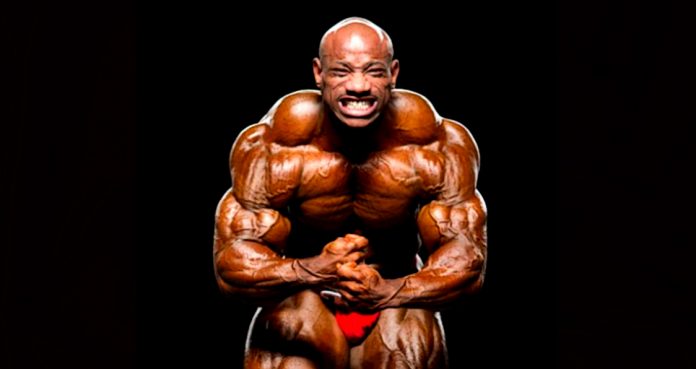
5 Ways To Build Monstrous Rear Delts
Image via Instagram @mrolympia08
Follow These Steps To Bring Up Your Rear Delts
Rear delts are a weak muscle group for most people. They make it even worse by not training them often. They are two major reasons why most people have underdeveloped rear deltoids. First, the rear delts are a small muscle group which most people overlook training.
The second reason is much more profound. Since the rear delts are on your back, it is hard to build a mind-muscle connection with them. Your shoulders consist of three parts; front, medial and rear. You should be training each of them equally.
1. Train Your Rear Delts At The Beginning of Your Workouts
Most people do a single exercise of rear delts at the end of their workouts. If you have underdeveloped rear delts, a single exercise at the end of your workouts isn’t going to do anything for you. If you want to bring up your lagging rear deltoids, start training them at the beginning of your workouts.
You are fatigued at the end of your workouts and won’t be able to target your rear delts optimally. Establishing a mind-muscle connection with your rear deltoids when you train them at the beginning of your workouts is easier.
2. Train Them Twice a Week
Training your rear delts twice a week is one of the most effective ways of bringing them in tune with the rest of your physique. Since your rear delts are on your back, you can train them on your back day.
You don’t need to use heavy weights while training your rear delts. Focusing on your form and maintaining a full range of motion will get you the best results. Schedule your rear delt workouts in a way that you have at least 48 hours to recover from your last workout.
3. Do At Least A Couple of Exercises
For most people training rear delts is doing one exercise at the end of their shoulder workouts. You need to be doing at least two exercise to improve your rear caps. You could perform one exercise at the beginning of your workouts and one at the end.
Doing an exercise at the beginning of your workouts will help in activating your rear delts and you will recruit them in every exercise you do. Performing an exercise at the end will help you complete the workout with a nasty pump in your rear deltoids.
4. Use Advanced Training Techniques
Just like with the other muscle groups, you should be using advanced training techniques while training your rear delts. Advanced training techniques like drop sets, super-sets, intra-stretch stretching, etc. help you in shocking the muscle.
If you perform the same exercises every time you train your rear caps, your muscles will get used to your training and will stop responding to your workouts. Use the advanced training techniques to keep your muscles guessing.
5. Use Cables
Don’t limit your rear delt gains by only using dumbbells. Using cables in your workouts can give you an edge. Cables put a constant amount of tension on your target muscle group throughout the movement.
On the other hand, while using dumbbells, you have tension on the concentric movement but have no load on the muscle on the eccentric movement. Incorporate the bent over cable rear delt flyes, cable face pulls, reverse pec deck flies in your workouts to completely smoke your rear delts.
Are your rear delts lagging? Let us know in the comments below. Also, be sure to follow Generation Iron on Facebook and Twitter.
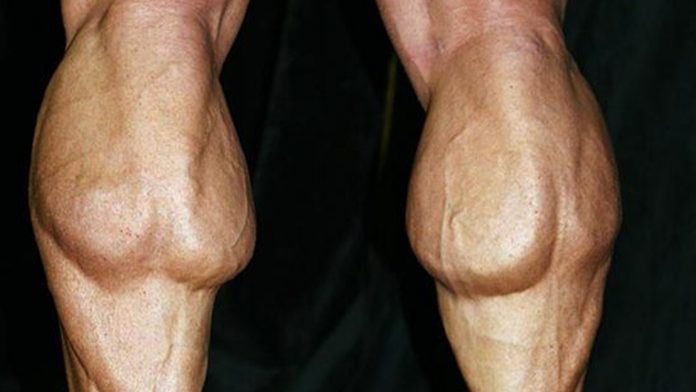
5 Rules of Building Monstrous Calves
Build Monstrous Calves With These 5 Rules
If you were to make a list of the most undertrained and overlooked muscles, calves would probably end up at the top spot. Most people have toothpick calves because they treat them as accessory muscles.
You need to train your calves like you train all your other muscles. You should know about the unsaid rules of training calves. Calves can be one of the most stubborn muscles to develop and you need to be ruthless with them if you want them to grow.
Train Them From All Angles
For overall development of the calves, you need to train them from all the angles. Changing the feet placement on the machine targets different parts of the calves. Standing with your feet parallel to each other will target the medial calves.
To target the inner calves, stand with your toes placed apart and your heels together forming a “V”. Placing your toes together and heals apart (forming an “A”) will target the outer calves.
Switch the Intensity
You can’t expect to perform the same calf exercises in every workout and expect to see results. You need to shock your muscles in every workout for them to grow. Perform different exercises in every workout.
Change the intensity of your calf workouts by switching between light weight and high reps and heavy weights and low reps. While using light weights, perform a lesser number of sets as compared to using heavier weights.
Full Range of Motion
Most people make the mistake of lifting weights which are too heavy for them. Lifting heavy while training calves can limit your range of motion. You need to follow a full range of motion to recruit all the muscles fibers in your calves.
While performing the calf raises, your heels should be a few inches off the ground at the bottom of the movement. At the top, your feet should look like that of a ballerina standing on her toes.
Train Them if They Aren’t Sore
A rule of thumb for training calf is you can train them if they aren’t sore. Calves are relatively small muscles and need a smaller amount of time to recover after your workouts. If you have weak calves, you can take the liberty of training them whenever they aren’t sore.
You need to perform a variety of standing (legs extended) and seated (knees bent) calf exercises to optimally train your calves. The standing variation trains the gastrocnemius muscle while the seated trains the soleus muscle.
Use Advanced Training Techniques
You can take your calf training to the next level with the advanced training techniques. Use supersets, drop-sets, intraset stretching, forced reps, negative reps, and other advanced techniques to completely annihilate your calves.
You don’t have to stick to the vanilla calf training. If you have special needs, cater to them by going out of the way. If you have weak calves, don’t blame your genetics, work on your calves until they turn into full brown bulls.
How often do you train your calves? Let us know in the comments below. Also, be sure to follow Generation Iron on Facebook and Twitter.

How To Build Tree Trunk Legs For Serious Growth
Build tree trunk legs with these exercises for only the best gains.
Whether for functional or more sport specific needs, building tree trunk legs can be of great assistance when it comes to boosting overall gains. We’ve all seen those guys in the gym with those twig-like legs, barely able to squat. Don’t knock them for squatting, good on them for doing it. But they don’t work out their legs enough to even earn the ability to lift big weight. And it shows. Legs are important for sport as well as everyday activities and to neglect them can be a terrible disservice.
While we all love to build those vanity muscles and make our upper bodies pop out of our shirts, a solid set of legs can round out a massive physique for the better and give us the best chance at seeing real success. With the right exercises, our workouts can be fun and engaging so we don’t get bored of doing the same old leg exercises with minimal gains.
Let’s jump into this and see how best to build those tree trunk legs. The right exercises can catapult you into the right mindset to keep you working at it and feel as though you are putting together an absolutely massive and shredded physique.
Benefits Of Massive Legs
Our legs matter and whether or not you have tree trunks is beside the point. Having strong legs can work for your benefit in a number of ways including:
Lower risk of injury by having a strong and stable lower half.
Increase endurance capacity to go for longer sessions.
Boost power and explosivity for sport specific movements (1).
Add to your physique so it rounds itself out nicely.
Best Exercises For Tree Trunk Legs
Knowing the best exercises to perform for those tree trunk legs can be of great assistance to you as you seek to build that massive and shredded physique. Let’s take a look at some amazing leg exercises below:
Romanian Deadlift
The Romanian deadlift is a functional movement and nice variation of the deadlift and will improve balance, stability, and power while working your posterior chain nicely. Giving your hamstrings some great work, this can round out your legs to see effective growth take place (2).
Rowing Machine
A great cardio workout, the rowing machine works many muscles in your body. As a sport driven by the pushing motion, your legs take the majority of the load, therefore increasing strength and size. A low-impact workout to burn calories and build endurance, this works your legs to effective tree trunk size.
Goblet Squat
The goblet squat works to improve overall strength and mobility while establishing squatting efficiency. This is perfect for building muscle as it can be performed with your bodyweight, dumbbells, or kettlebells. For those avoiding the traditional barbell squat, this is a nice variation to still see tree trunk-like gains.
Calf Jumps
Calf jumps are a great plyometric exercise to improve strength and explosiveness. The ability for the calf muscle to absorb force with the continued movement allows the muscle to wear down and fatigue, thus offering the chance for maximal growth to take place. Plus, you get that heart rate going for nice cardio work.
Lunges
A great lower body exercise, lunges consist of many variations to work your leg muscles, and those surrounding muscles, differently. Able to increase strength and size, while also building balance and stability for support, you promote efficient gains and give yourself that extra boost when it comes to seeing those tree trunk legs take shape (3).
Sissy Squats
A bodyweight exercise targeting the lower thigh area, sissy squats are an uncommon but highly effective muscle building exercise. With proper form and a real level of resistance, what you get is a serious lower body brutalizer to force those muscles to grow. Form is key, however, for this exercise can be a taxing on those joints given its unusual movement.
Mountain Climbers
Mountain climbers are a great HIIT exercise designed to increase strength, cardio, and core strength. It will also boost leg growth as a result of the fast-paced movement and necessary action of the legs to complete an effective exercise. This is considered a total body workout with cardio and endurance elements, but your legs will feel a burn and they will build muscle.
Jump Rope
For bodybuilders and other athletes looking to increase their aerobic capacity while also building muscle, jumping rope is exactly what you need. A versatile and convenient exercise, all you need is the jump rope and you can do this anywhere and at anytime. Great for weight loss and endurance, what this does is increase those leg muscles to promote strength and power for all things gains (4).
Pistol Squats
Pistol squats is one of the most effective unilateral exercises that can be performed for strengthening your legs, mobilizing joints, and improving overall squat mechanics. By recruiting more muscles, you can accelerate strength and improve all areas of the movement.
Skater Squats
Another great unilateral exercise, skater squats can enhance strength and work to generate more power from each leg. A good variation of the pistol squat, this gets you moving and can be less taxing on your knees, while still offering the ability for muscle and those tree trunk legs.
Wrap Up
Building those tree trunk legs can be challenging but not impossible. With the right exercise and proper approach to training, you can better tackle any and all of those wants and needs to build those massive legs. Strong legs can give us the ability to stay grounded, more stable, and perform better for sport specific and functional movements. The right exercises can make or break your gains and give you those tree trunk legs you want most so give some of these exercises a try, place them into your leg day routine, and watch those gains take off.
Let us know what you think in the comments below. Also, be sure to follow Generation Iron on Facebook, Twitter, and Instagram.
*Images courtesy of Envato
References
Bean, J.; et al. (2003). “A Comparison of Leg Power and Leg Strength Within the InCHIANTI Study: Which Influences Mobility More?”. (source)
Fisher, J.; et al. (2013). “A randomized trial to consider the effect of Romanian deadlift exercise on the development of lumbar extension strength”. (source)
Jonhagen, S.; et al. (2009). “Forward lunge: a training study of eccentric exercises of the lower limbs”. (source)
Ozer, D.; et al. (2011). “The effects of rope or weighted rope jump training on strength, coordination and proprioception in adolescent female volleyball players”. (source)
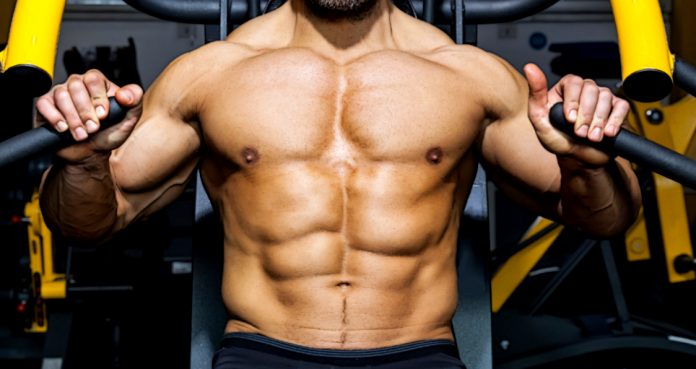
Advanced Training Techniques To Take Your Gains To The Next Level
Advanced Training Techniques You Should Know About
The reason you’re not building muscle could be because you’ve hit a plateau. Once your body gets used to your usual training techniques, it stops growing. You need to be shocking your muscles in order for them to grow.
Advanced training techniques can help you get the most of your workouts by annihilating your muscles. Incorporating these techniques into your workouts will keep your muscles guessing with what hit them and will force your muscles into growing bigger.
5 Advanced Training Techniques To Incorporate Into Your Workouts
1. Supersets
All of these techniques are supposed to make your workouts harder. Doing this will push your muscles to work harder and in the process will make them stronger and bigger. Supersets are one of the most common advanced training techniques used in the gym.
In supersets, after you’re done with an exercise, you move onto a different exercise for the same muscle group without taking any rest. This cycle of exercises is considered to be one set. Sets with three different exercises are known as a giant set. Supersetting alternate muscle groups are known as antagonistic supersets.
2. Drop Sets
Drop sets can take your workouts to a whole new level. This technique is the best if you’re aiming for muscle failure. It’s not uncommon to have sore muscles the day after you perform some drop sets.
Drop sets can take lesser time as compared to the supersets as you don’t have to switch between exercises. After you’re done with your set, lower the weights and do another set until you hit failure. Avoid stopping for rest between the supersets.
3. Intraset Stretching
Intraset stretching is a relatively newer training technique. Dr. Jacob Wilson and his team at the Applied Science and Performance Institute in Tampa, Florida put this technique to test and it came out with flying colors. In intraset stretching, you complete your normal set and then hold the weights at the stretched position.
The pump and added tension of holding the weights at the stretched position intensify the muscle pumps and makes your muscles go through a huge amount of damage. You complete another set after holding the weights at the stretched position for 10 seconds.
4. Blood Flow Restriction Training
Getting a pump is the best thing which could happen to you in the gym. A pump is when your muscles are filled with blood. Blood carries all the nutrients, including protein, to your muscles. This is the reason bodybuilders chase the pump.
Some people confuse blood flow restriction training with occlusion training. Blood flow restriction training allows the inflow of blood into the muscle but restricts the outflow when you have a pump. Occlusion training, on the other hand, cuts off the blood flow to the muscles completely.
In BFR training, you tie an elastic band around your working muscle. You would only be able to lift around 50-60% of your regular weights with your muscles tied. The pumps and pain while using this technique is something you should experience at least once.
5. Rest-Pause
Rest-pause training is a complete overkill for your muscles. Your muscles will be filled with lactic acid and you won’t know what to do with them by the end of your workout. The rest-pause technique turns your sets into multiple mini-sets.
While using this technique, your main goal is to exhaust your muscle fibers and leave nothing in the tank. Once you hit failure, rest for 5-10 seconds and resume the set until you can’t do any more reps.
Which advanced training technique will you use for your next workout? Let us know in the comments below. Also, be sure to follow Generation Iron on Facebook and Twitter.

These 5 Exercises Will Boost Your Libido And Give You Massive Gains
Boost Your Libido
Working out can improve your life in more ways than it is credited for. It’s time people start looking at working out as more than just working on the muscles. Pumping iron can have both physiological and psychological benefits.
Spending some time in the weight room can improve your sex drive. Working out can even help you if you don’t feel any sexual desire. Feeling asexual can be caused by many reasons including stress, exertion, mental exhaustion, etc.
While lifting weights can help boost your libido, there are some exercises which work better than the others. Make these five exercises a part of your training routines to boost your libido –
1. Squats
Squats are a complete leg builder. This exercise can also help you with your low sex drive. Legs are the biggest muscle group in your body and working them by squatting can improve your testosterone levels.
Squats increase your overall muscles mass, strength and sex drive. There are enough variations of this exercise, so you’re never bored of it. Make squats a part of your workout routine to improve your libido.
2. Barbell Hip Thrust
No other exercise comes close to barbell hip thrusts when it comes to mimicking a sexual position. This exercise also happens to be one of the most effective in improving your sex drive. It also adds muscle mass and strength to your lower body, especially glutes.
It can be incredibly hard to not think about sex while performing this exercise. Tip: avoid making eye contact with the opposite sex while you’re doing this exercise if you don’t want to end up sending the wrong signals.
3. Bench Press
Compound (multi joint) exercises are the most efficient in helping you improve your testosterone levels and sex drive. Bench press has been the poster exercise for manhood for a long time.
This exercise helps broaden your chest which, for many men, can lead to increased confidence. We hope you make it count and put this raised confidence to good use with women. Incline and decline bench press can work different areas of your chest.
4. Deadlifts
Deadlifts work your entire body. There are only a few other things as badass as lifting some heavy weights off the ground. Deadlifting regularly can improve your libido and make you stronger at every other exercise.
Deadlifts can also help you in adding lean muscle mass. Avoid heavy deadlifts if you’re suffering from a back injury. You can also try different versions of this exercise like sumo deadlifts or dumbbell deadlifts to keep your body guessing.
5. Clean and Press
Clean and press primarily work your shoulders, but secondary muscles like your upper and lower back, traps, hamstrings, quads, glutes, and calves are also involved. It is a full body exercise which can improve your physique and sex drive.
Clean and press is also a compound exercise which will help you put on muscle mass and definition. You can perform this exercise in a hypertrophy workout or a strength workout. All you need to do is adjust the number of sets and reps.
Which according to you in the best exercise to boost your sex drive? Let us know in the comments below. Also, be sure to follow Generation Iron on Facebook and Twitter.

The Eight Best Bodyweight Exercises for the Biceps
The Eight Best Bodyweight Exercises for the Biceps
Training biceps without iron seems like a waste of time. Who wants to do many sets of pushups and pullups when there’s a perfectly good gym around the corner or perhaps in your basement?
But in a time-crunched, mobile world, it’s not always possible to get to a gym and not everyone has the space for a home set-up. That’s why it’s valuable to have bodyweight substitutes available when traveling, stuck in a hotel room, or otherwise on the go. Studies suggest it’s possible to get results without investing in equipment or a gym membership, just your body weight.
This 8-exercise, two-set circuit will challenge your biceps with only your body as resistance. We’ll alternate pushing and pulling movements so you keep moving without rest, providing an aerobic component to your training as well.
Chaturanga
What it does: This popular yoga move challenges your biceps and overall core stability. It’s also an effective warm-up stretch to begin a workout.
How to do it: From a standard plank position, lower your elbows to shoulder height, pinning them against your side. Your chest, shoulders, upper arms, and elbows are in alignment. Push back to plank.
How many? 2 sets of 10 reps.
Chin Ups
What it does: Like the overhead pull-up, the chin-up is an effective shoulder and back exercise to build that V-shaped torso. But by doing the underhanded chin up, we place more emphasis on the biceps.
How to do it: Grab the bar with an underhand grip. Hanging from the bar, pull your shoulder blades back and down to lift your body and build momentum. Finish by pulling up with your arms.
How many? 2 sets of 10 reps (or as many as possible).
Dive Bomber Pushups
What it does: This pushup variation requires more use of the biceps and shoulders.
How to do it: Start with hips in the air and feet shoulder-width apart. Lower head and shoulders down as if going under a bar. As you push your head and shoulders into position, arch your back. Reverse process to return to starting position.
How many? 2 sets of 10 reps.
Inverted Bar Rows
What it does: This provides many of the benefits of a pullup while better isolating the biceps.
How to do it: Lie underneath a bar that’s several feet above you, such as in a squat rack. Hang underneath the bar with heels on the ground and arms fully extended. Pull your chest toward the bar. Pause at the top and return to starting position.
How many? 2 sets of 10 reps.
3-Way Pushups
What it does: By doing three sets of 10 pushups in three different positions consecutively, we’re amping up this workout quickly while challenging our biceps from three angles.
How to do it: Do 10 traditional pushups (hands directly below the shoulders) followed by 10 “diamond” pushups (index fingers and triceps touching), followed by 10 wide-grip pushups (hands wider than the shoulders)
How many? 2 sets of 10 reps of each.
Prone Grip Pullups
What it does: Though best known as a back movement, you’re also hitting the biceps, along with the shoulders and chest.
How to do it: Grab the bar with an overhand grip. Hanging from the bar, pull your shoulder blades back and down to lift your body and build momentum. Finish by pulling up with your arms.
How many? 2 sets of 10 reps (or as many as possible).
Plank
What it does: This promotes overall core stability, but your biceps are keeping you in the proper position.
How to do it: Lie in a prone pushup position with hands on the floor, elbows under shoulders and bent 90 degrees. Push up off the elbows, tucking your chin so your head is in line with your body. Keep head in line with spine and belly button drawn in. Hold for one minute.
How many? 2 sets of 60 seconds.
Monkey Bars
What it does: All that time spent gliding across the monkey bars as a kid was an awesome biceps workout. That’s still true as an adult.
How to do it: There are three methods. Avoid the one-arm, every-other bar swinging method. That looks most monkey-like but can tax the shoulders. Instead, start with both hands on the bar, facing the bars. Move one forward and then the other. Or you can move laterally, starting by facing perpendicular to the bars, reaching from one side and then bringing your second hand over.
How many? 2 trips through the bars, usually six or eight rungs.
Pete Williams is a NASM-CPT and the author or co-author of several fitness books, including Core Performance and Every Day is Game Day. His work has appeared in publications such as Men’s Health, Men’s Journal, and USA Today.

Best Exercises for Building Guns of Steel
Build Bigger Arms with these Exercises
Most people get a gym membership so they can have bigger arms. Although arm exercises are shown a lot of love all around the world, only a few people are successful in building their pythons.
Just like us humans, no two arms exercises are created equal. We see a countless number of people curling weights but only a few own a pair of loaded guns. Don’t be one of those people wasting their time doing bicep curls. Read through and join the other side.
Biceps
Barbell Curls
Barbell curls are for biceps what squats are for the legs. Using the Olympic barbell for the bicep curls will recruit more muscle fibers as compared to the smaller barbell. Maintain an upright stance while performing the curls and don’t use momentum by bending forward or backward.
Dumbbell Bicep Curls
Alternate dumbbell bicep curls are a staple in a bicep workout. While performing the curls, rotate your wrists outwards at the top of the movement. Doing so will work the peak of your guns.
Preacher Curls
Preacher curls are an isolation exercise. Most people make the mistake of not following a full range of motion while performing this exercise. Your forearms should touch the preacher machine at the bottom of the movement, and the barbell should be at a fist’s distance from your forehead at the top.
Dumbbell Hammers Curls
Dumbbell hammer curls target the outer head of the biceps, the forearms and the length of the biceps. Tip – curling the dumbbells towards the inner pecs will target the outer biceps and curling straight ahead will target the medial biceps.
Concentration Curls
Bend over and place your elbow on the side of your quad. Perform a slow and controlled curl and squeeze your biceps at the top of the movement. You can perform the concentration curls while standing or sitting.
21’s
21’s are one of the most brutal bicep exercises. Bicep pumps will never be the same for you once you try this exercise. In a single set, perform seven reps from the bottom to the middle of a bicep curl range. Perform the next seven reps from the top to the middle. Finish the set with seven reps with a full range of motion.
Overhead Bicep Curls
Stand in the center of the cable pulley machine and use the D-handle attachments. Mimic the motion of performing a front double bicep pose and squeeze the living hell out of your pythons. Overhead bicep curls work the inner heads and the peak of biceps.
Triceps
Close Grip Bench Press
Close grip bench press help in building muscle mass in your triceps. Most people have big biceps but lack size on their tri’s. The close grip bench press is a compound movement and is best done at the beginning of the workouts.
Overhead Dumbbell Extensions
The overhead tricep exercises primarily target the long head of the tricep while the pressing movements target the medial and the shorter heads. Performing the overhead extensions with back support will assist in maintaining a better form.
Cable Pressdowns
Cable press downs are a great isolation exercise. Most people make the mistake of leaning on the bar and towards the pulley. You should stand straight and maintain a full range of motion to get the most out of the exercise.
Cable Kickbacks
Cable kickbacks are better than the dumbbell version as they keep constant tension on the triceps. Contract your triceps at the extension of the elbow and slowly return to the starting position.
Overhead Rope Extensions
Overhead rope extensions are one of the few isolation exercises which target the long tricep head. At the bottom of the movement, keep your hands close to each other and spread them as you reach the top.
Barbell Skullcrushers
Skullcrushers are a great exercise for the overall development of the tris. Start with the barbell at a fist’s distance from your forehead. Your elbows should stay in place throughout the movement. Squeeze your triceps at the top of the movement.
Dips
Dips are a functional movement and you can change the difficulty of this exercise as per your current stage. If you are a beginner, you can do the bench dips. Intermediate lifters can perform the dips on the parallel bars and the advanced bros can do the weighted dips.
Which is your favorite bicep exercise? Let us know in the comments below. Also, be sure to follow Generation Iron on Facebook and Twitter.
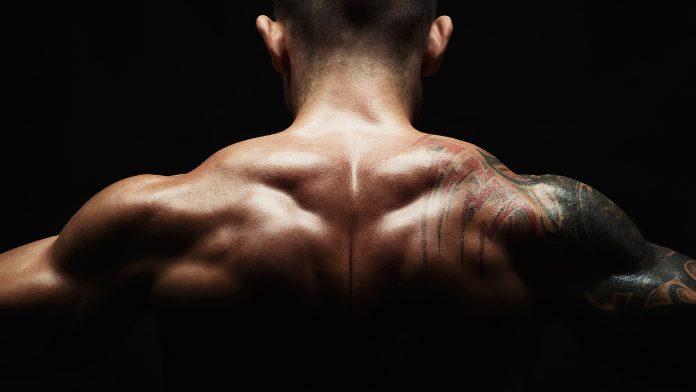
Build Traps Like Mountains with this Workout
Workout for Building Monsterous Traps
Although the trapezius muscles take up a lot of real estate on your back and shoulders, most people treat them like accessory muscles. Well developed traps can make your shoulders look bigger and can add the illusion of broad shoulders and a narrow waist to your physique.
The trapezius muscle extends longitudinally from the occipital bone to the lower thoracic vertebrae of the spine and laterally to the spine of the scapula. It helps in moving the scapula and supports the arm.
Exercise 1
– Upright Row to Shoulder Press – 3 Sets 15-12-10 Reps
Since the traps are a relatively small muscle group, most people prefer training them with their shoulder or back. Since this article is all about building giant traps, we’ll focus on the trapezius muscle and the other shoulder heads.
In upright rows to shoulder press, hold the barbell with a shoulder-wide grip and let the bar rest against your quads. Pull the barbell up to your shoulders, rotate your wrists and get into the military press position. Complete a military press and slowly return to the starting position.
Exercise 2 – Superset
– Face Pulls – 3 Sets 15-12-10 Reps
– Trap Raises – 3 Sets 15-12-10 Reps
Face pulls work the rear delts and the trapezius muscles. Adjust the cable pulley height to your shoulder level and use a rope attachment. At the contraction point, your hands should be close to your shoulders and you should focus on flexing your shoulder blades.
For the trap raises, lie chest-down on an incline bench with a dumbbell in each hand. Retract your traps and raise your arms without bending your elbows so that your arms are parallel to the floor. Return to the starting position and repeat with a strict form.
Exercise 3
– Dumbbell Shrugs – 3 Sets 20-15-12 Reps
Shrugs are a staple in a traps workout. Although shrugs are one of the easiest exercises to perform, most people screw them up by bringing in their inflated egos and lifting weights which are too heavy for them.
Grab a dumbbell in each hand and place them at the side of your quads. Lift your shoulders with a slight bend in your elbows and try touching your ears with them. Hold and contract your traps at the top of the movement.
Exercise 4
– Barbell High Pulls – 3 Sets 15 Reps
Barbell high pulls are a variation of the upright rows. Hold the barbell with an overhand grip right outside the shoulder width mark. You could perform the rack-pull version of this exercise or let the bar hang in front of your quads.
The barbell high pulls are an explosive movement as compared to the upright rows. Perform an explosive upright row to lift the weights as high as you can and get on your toes as the barbell reached the top of the movement. Let gravity do its magic on the way down and don’t try to control the bar.
Exercise 5 – Superset
– Front Smith Machine Shrugs – 3 Sets 20-15-12 Reps
– Behind the Back Smith Machine Shrugs – 3 Sets 20-15-12 Reps
Performing the front shrugs on the smith machine engages the anterior traps, and behind the back version engage the posterior traps while the dumbbell shrugs focus on the medial trapezius muscles.
Using the smith machine also adds constant tension to your traps as it is an isolation exercise. You could use a shrugs machine if you have access to it at your gym or use the shoulder press machine if your gym doesn’t have a shrug or smith machine.
Which is your favorite traps exercise? Let us know in the comments below. Also, be sure to follow Generation Iron on Facebook and Twitter.
*Header image courtesy of Envato Elements.
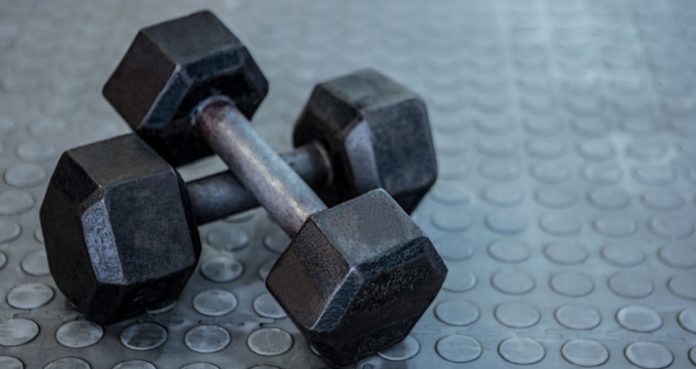
Promoting Back Health With The Dumbbell Deadlift
The Influence of the Deadlift on Overall Health
When it comes to fundamental resistance exercises, the deadlift is up there as one of the most essential.
For so many individuals, the back can be problematic – specifically the lower back. Pain is a fairly common occurrence which often result from weakness across a number of posterior chain muscles.
Often these vital posterior chain muscles are underused and neglected in day-to-day life and also during strength training.
In addition to this, sitting for prolonged periods and poor posture can contribute further to back problems and pain.
The deadlift effectively recruits and develops all muscles of the posterior chain – from the calves in the leg, right up to the traps in the upper back – and effectively reduce low back pain (1).
The deadlift places the greatest load on the lower back, glutes and hamstrings but requires a large degree of core engagement too (2).
Effectively strengthening all of these muscles and building lower back resilience can help to improve posture, reduce pain and eliminate problems.
The Benefit of Conjugate Training
Most individuals concentrate on conventional strength training which involves using a select number of heavy compound exercises to develop performance and enhance health.
While this method undoubtedly reaps reward in terms of strength and size gains, it may lead to over development of specific muscle groups and consequently lead to imbalances.
Research has suggested that muscle imbalances can increase the risk of sustaining an injury (3) – something that we all want to avoid.
There will undoubtedly be times in your training journey where it will be necessary to change your training styles and exercise selections.
For example, it may be necessary to do this as a method of working around an injury or for moving beyond a strength plateau.
One highly effective training method is conjugate training which incorporates an array of different exercises and styles in order to develop a more-rounded physique.
The varied nature of the workouts not only means that strength levels continue to rise but also that the risk of injury is substantially lower and promotes longevity.
Building Power with the Dumbbell Deadlift
A number of deadlift variations do put a lot of stress on the lower back, however, it is possible to save your back with dumbbell deadlifts.
The dumbbell deadlift is one of the greatest conjugate exercises around which has made a re-emergence in recent times having being made popular back in the 80’s.
Most recently, powerlifter and strongman Nick Best posted a training video on Instagram in which he pulls a 150 pound dumbbell deadlift.
It is no coincidence that Nick Best uses these methods and has won a powerlifting championship and still competes in World’s Strongest Man competitions – all while being over the age of 40.
When it comes to the dumbbell deadlift, many individuals view it as inferior to the barbell deadlift and believe that it is really for novices and lightweights.
However, the dumbbell deadlift and conjugate training have successfully been used over the years to successfully train both strongmen and powerlifters.
Many hardcore gyms have a range of heavy dumbbells (range up to as much as 250 pounds!) to make the dumbbell deadlift an extremely challenging, yet rewarding, exercise.
The dumbbell deadlift works particularly well as a finisher at the end of a tough leg workout – either singles or for reps.
Not only will you efficiently be building strength, it is also a fun way to end a session. In addition, if you have a training buddy, it can also provide some friendly competition to push you further.
Developing Range of Motion Through Dumbbell Deadlifts
Conjugate training exercises tend to work through a larger range of motion in comparison to traditional strength exercises.
Because the range is increased significantly, the weight that is being used should be reduced accordingly.
Avoid making the mistake of using the same amount of weight as you would with traditional training as this may lead to deviations in form and consequent injury.
The extended range of motion will not only improve strength (4) but will also promote joint health and prevent muscle tightness.
The dumbbell deadlift specifically will increase the strength and flexibility of the glutes, hamstrings and hips which are areas that typically tighten up with traditional style workouts.
There are two common methods of completing the dumbbell deadlift; either from a dead start or from the hang position.
The hang position is best when completing Romanian deadlifts which is a great variation that really hits the hamstrings hard.
To maximize the stress placed on the hamstrings, the legs should be kept relatively straight throughout the entirety of the exercise.
Remember to drive the chest up and engage all core musculature in order to prevent the back from rounding and protect the spine from injury.
Meanwhile, the dead start method involves an extended range of motion as the dumbbells must be pulled from and returned to the floor with each rep.
A conventional barbell deadlift will start with the bar at approximately shin-height as the weight plates lift the bar off the floor.
The dumbbells however will start down just above the ankles and force the performer to drop significantly deeper in order to to pick up the weight.
This extended range effectively targets the oblique muscles, glutes and hip musculature to a greater degree.
For true conjugate training, look to increase the range of motion as far as possible. It is possible to manipulate this by utilizing a number of different methods.
For example, create a deficit by standing on weight plates, utilize rep tempo variations or even consider looping mini-bands around the dumbbells and the ankles.
How to Perform the Dumbbell Deadlift
In addition to the clear range of motion differences between the two exercises, the positioning of the load is also different.
For the barbell deadlift, the load is placed to the front of the body whereas during the dumbbell deadlift, the weights are held in both hands and are positioned to the sides of the body.
Therefore, when performing the dumbbell deadlift, start by assuming a hip-width stance and place the dumbbells on the floor just outside the feet.
Push the chest up and pull the shoulder blades together before pushing the hips backwards and bending at the knees to bring you down toward the floor.
In this position, the hips should be higher than the knees and the back should remain flat.
Grip the dumbbells hard and ensure that the core is still engaged. Then, drive hard through your heels and rise up to standing, keeping the dumbbells tight to the body throughout.
Ensure you squeeze the glutes together tightly at the top of the movement. Reverse the entire movement so that the dumbbells return to the floor.
Dumbbell Deadlift Finishers
As mentioned, the dumbbell deadlift is a superb way to finish a workout. The following two finishers can easily be applied to the majority of strength-based training programs.
1) Max Effort (Deadlift) – 2 heavy sets of 20 reps
On training days which involve heavy barbell deadlifts, look to complete this finisher to hit the lower back and hamstrings.
There is little point in performing the exact same movement once again, therefore ensure that you use the RDL style with this finisher and not the dead start.
2) Max Effort (Squat) – 2 heavy sets of 10 reps (or less)
On training days involving heavy barbell squats, add in sets of heavy dumbbell deadlifts with a weight up to as much as 150 pounds.
If you are going heavier than 150 pounds, look to lessen the total number of reps to keep the risk of injury minimal and maintain form.
Sample Conjugate Training Program Using Dumbbell Deadlifts
Incorporating the dumbbell deadlift does not have to complicated. Here is how your max effort sessions for both the squat and deadlift may look.
Max Effort (Squat)
Exercise
Sets x Reps
Barbell Squat
5 sets / Working up to 1 Rep Max
Dumbbell Lunge
4 x 6 – 8
Banded Hamstring Curls
3 x 12 – 15
Ab Wheel Rollouts
3 x 12 – 15
Dumbbell Deadlift (Conventional)
2 x
